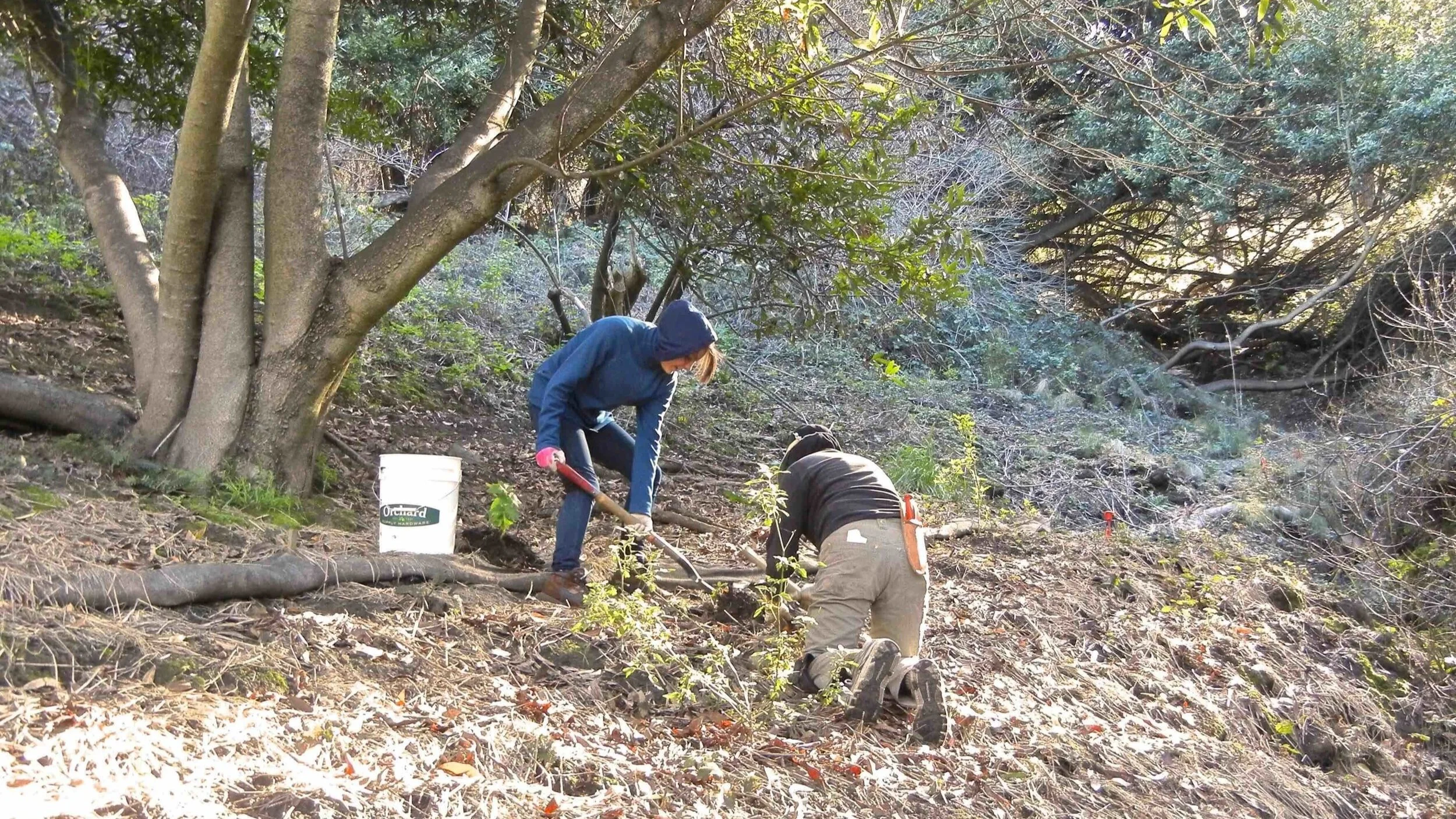Workshop attendees on the hillside planting native forbs and grasses after the removal of the old oak which had succumbed to “sudden oak death.”
THANKS TO EVERYONE who made January 12, 2019 such a fun and exciting start to this year’s restoration work in Garber Park. The recent removal of the old oak tree at the Evergreen Lane entrance, due to its earlier demise, gave way to a most timely, information-packed and fun workshop by Lech Naumovich. The workshop focused on the changing ecology of the Evergreen Hillside and was aptly named: Managing a Changing Oak Woodland: Oak Woodland Restoration Post-Climax.
The old oak came down on Thursday, January 10, the first sunny day after a week of down-pours, just in time for the weekend workshop. And what a fantastic workshop it was. From Lech: “ I estimate we planted over 100 plants (plugs, containers, cuttings plus we caged three coast live oak seedlings). What a great group and we got quite a bit of work done.”






